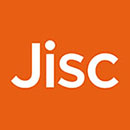Legal Design Thinking, Visuals in Contracts and its Legal Validity
Abstract
According to the results of recent studies, contracts today are not drafted or work the way its users intend. In general, too much emphasis is made in minimizing risk and not much work is made in order for contracts to serve as tools for the parties to accomplish their commercial objectives. This situation demands a change of paradigm. An alternative to the current paradigm is that of “Proactive and Preventive Law”, which objective is to prevent the occurrence of a conflict before it arises, incentivizing collaboration and trying to make contracts serve as a tool for those purposes. In order for this to be accomplished, it is necessary to work to make contracts truly understandable and usable by its true users. One way to procure for contracts to be more understandable and usable is by means of tools that Legal Design Thinking and contract design make available to us, such as visuals tools: icons, timelines, cycles, diagrams and tables, among others. We understand that the use of these kind of tools has full legal validity as the principle of contractual freedom allows for the parties to determine the content, style and format of a contract.
Downloads
References
Dore, T. G. (2020). Legal Design Thinking. Un nuevo enfoque para el proceso de familia. Suplemento especial. Derecho, Innovación y Tecnología, 111-120.
Felker, D., Pickering, F., Charrow, V. y Holland, M. (1981). Guidelines for Document Designers. Washington, D. C: American Institutes for Research.
Frydlinger, D., Hart, O. y Vitasek, K. (2019). A New Approach to Contracts. Harvard Business Review. https://hbr.org/2019/09/a-new-approach-to-contracts
Haapio, H., Plewe, D., y Roy, R. (2016). Next Generation Deal Design: Comics and Visual Platforms for Contracting. En Schweighofer, E. et al. (Eds.), Networks. Proceedings of the 19th International Legal Informatics Symposium IRIS 2016. Viena, Austria, 373-380.
Hagan M., Law by Design. http://www.lawbydesign.co/en/home
International Association for Contract & Commercial Management. (IACCM) (2015). Ten Pitfalls to Avoid in Contracting. http://cdn2.hubspot.net/hubfs/483419/Free_Resources/J11652-10Pitfalls-16pp-2015-06-08-web.pdf?__hstc=149696361.d81122da2fac7b3a070fd5a0a0c4f755.1583318203608.1583318203608.1583318203608.1&__hssc=149696361.1.1585754871265&__hsfp=3273370589&hsCtaTracking=6b863b06-7c44-486b-9558-e3a2dceee0ea%7Cde6bf51f-acf3-47cb-aaae-d6620dadd564
Passera, S. (2017a). Beyond the Wall of Contract Text. (Disertación doctoral). Aalto Publication Series.
Passera, S. (2017b). Contracts as Interfaces: Exploring visual representation patterns in contract design. Cambridge: Cambridge University Press.
Passera, S. y Haapio, H. (2013). Transforming Contracts from Legal Rules to User-Centered Communication Tools: a Human-Information Interaction Challenge. Communication Design Quarterly. https://doi.org/10.1145/2466489.2466498
Passera, S., Haapio, H. y Barton, T. D. (2013). Innovating Contract Practices: Merging Contract Design with Information Design. Proceedings of the 2013 Academic Forum on Integrating Law and Contract Management: Proactive, Preventive and Strategic Approaches.
Rossi, A. y Palmirani, M. (2017). From Words to Images Through Legal Visualization. Lecture Notes in Computer Science, 10791, 72-85.
Thompson, B. (2020). Incoterms® 2020 Explained - The Complete Guide. https://incodocs.com/blog/incoterms-2020-explained-the-complete-guide
Tsygankova, T. (2016). Design of Good Commercial Contracts - Practical Tools for Contract Drafters. Schweighofer, E. et al. (Eds.), Networks. Proceedings of the 19th International Legal Informatics Symposium IRIS 2016. Viena, Austria, 407-414.
Copyright (c) 2020 Revista Jurídica Austral

This work is licensed under a Creative Commons Attribution-NonCommercial-NoDerivatives 4.0 International License.
This license allows the copy, distribution, exhibition and representation of the work provided authorship is acknowledged and the work is properly quoted. Commercial use of the original work or the generation of derived works are not allowed.
The authors hereby guarantee the right to the first publication of the work to the Revista Jurídica Austral.
















































